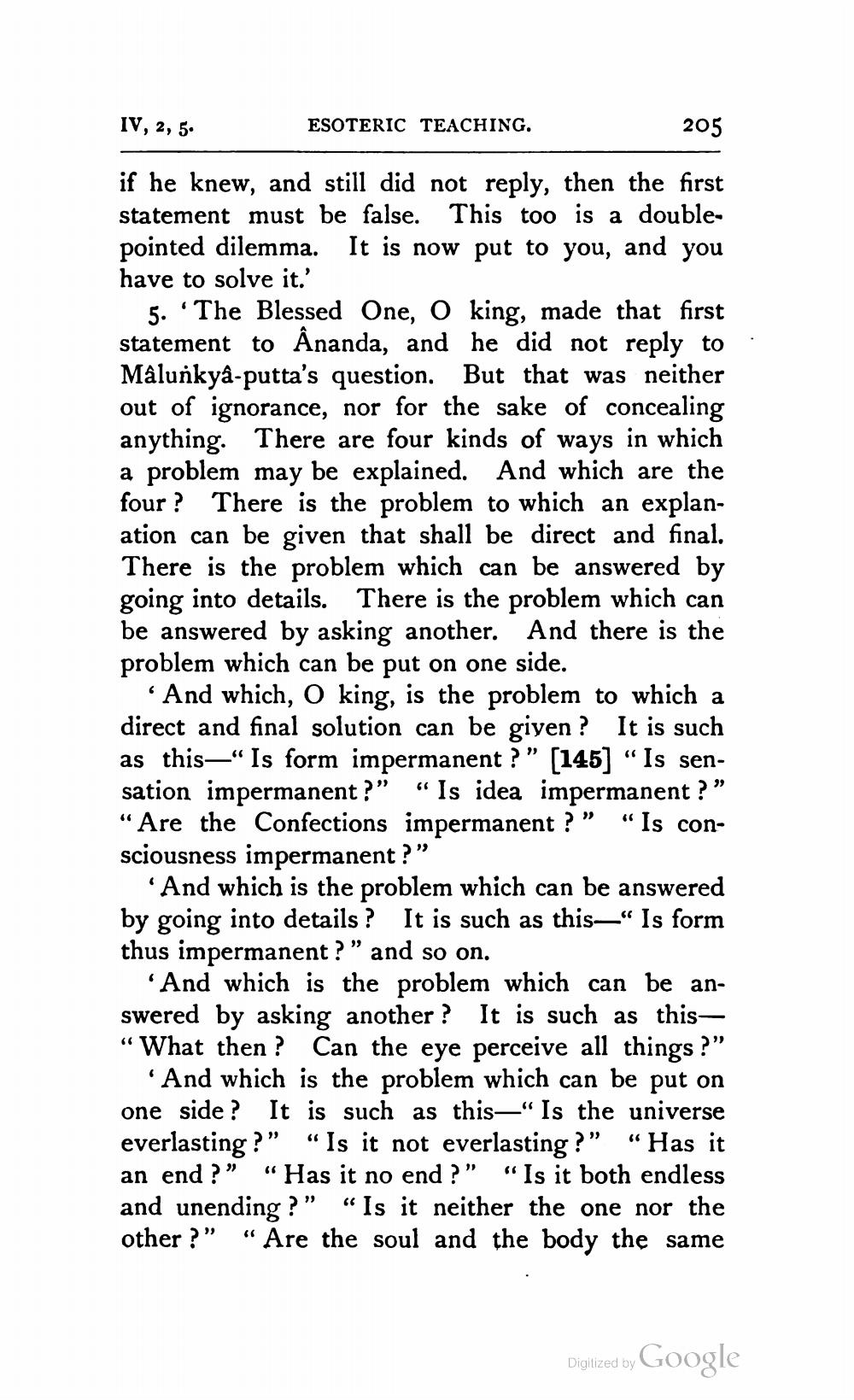________________
IV, 2, 5.
ESOTERIC TEACHING.
205
if he knew, and still did not reply, then the first statement must be false. This too is a doublepointed dilemma. It is now put to you, and you have to solve it.'
5. •The Blessed One, O king, made that first statement to Ânanda, and he did not reply to Mâlurkyâ-putta's question. But that was neither out of ignorance, nor for the sake of concealing anything. There are four kinds of ways in which a problem may be explained. And which are the four? There is the problem to which an explanation can be given that shall be direct and final. There is the problem which can be answered by going into details. There is the problem which can be answered by asking another. And there is the problem which can be put on one side.
* And which, O king, is the problem to which a direct and final solution can be giyen ? It is such as this—“Is form impermanent ?" [145] "Is sensation impermanent?" "Is idea impermanent ?” "Are the Confections impermanent ? " "Is consciousness impermanent ?"
And which is the problem which can be answered by going into details ? It is such as this—“Is form thus impermanent ? " and so on.
And which is the problem which can be answered by asking another? It is such as this“What then? Can the eye perceive all things ?”
And which is the problem which can be put on one side ? It is such as this—“Is the universe everlasting ?” “Is it not everlasting ?” “Has it an end?” “Has it no end?” “Is it both endless and unending ?” “Is it neither the one nor the other ?” “Are the soul and the body the same
Digitized by Google
Digitized by




